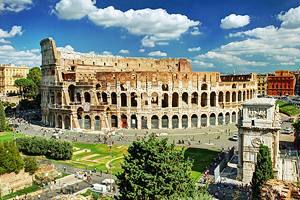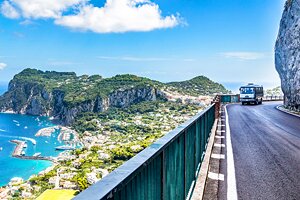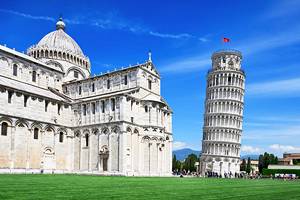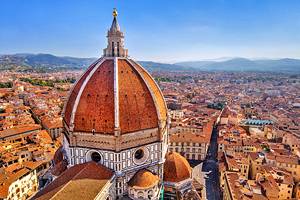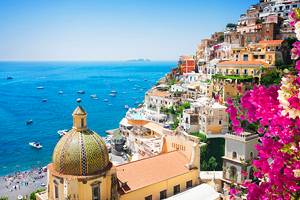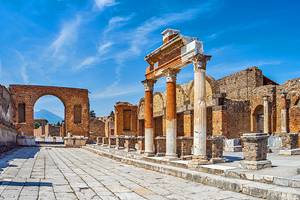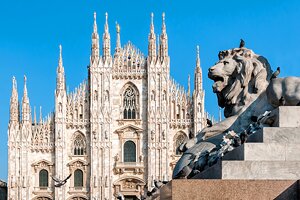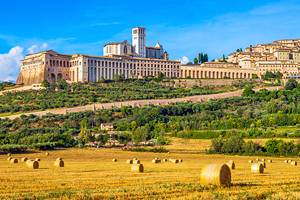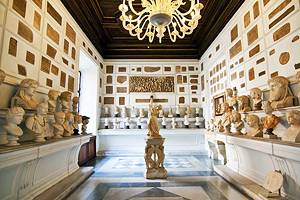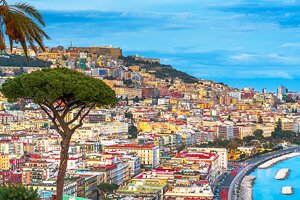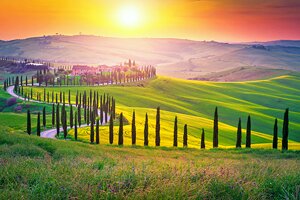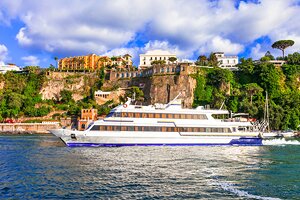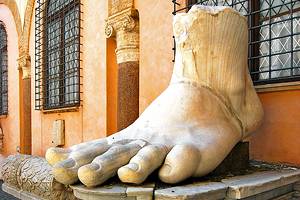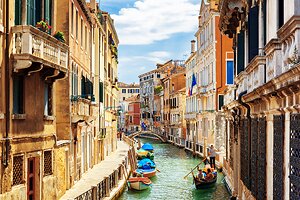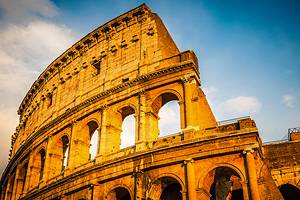Amazing Day Trips from Rome
Today's tourists have the ancient and modern Romans to thank for the many attractions around Rome. The nobility of ancient Rome fled the city in the heat of summer to enjoy the sea breezes at Ostia and cooler air of Tivoli and the Alban Hills, building lavish villas set in extensive parks and gardens.
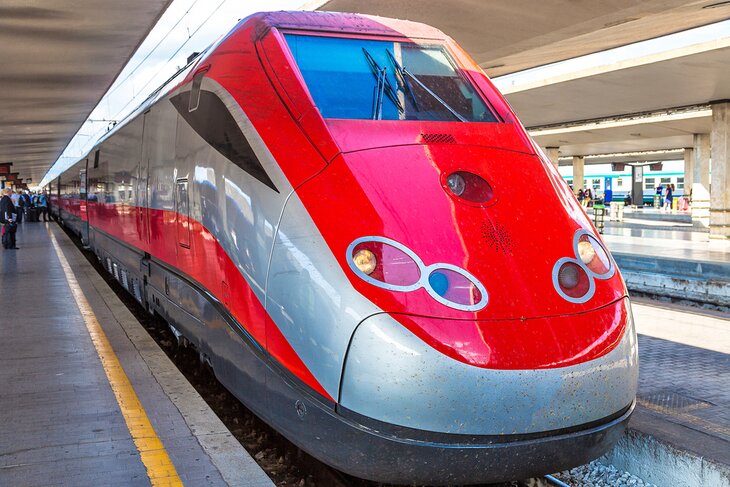
Emperors and cardinals followed their lead, as did popes and wealthy merchants. Emperor Hadrian outdid his contemporaries by creating an entire town inside his gardens at Ostia, replicating ancient wonders he had seen.
Beyond these attractions that are short day trips from Rome, the city is also a good base for day trips to attractions around the Bay of Naples — Pompeii, Capri, and the Amalfi Coast — as well as north to Florence and the hill towns of Tuscany.
You can drive to most of the day trips on here, but many of these destinations are easily reach by train. In some cases this is a more convenient option. If you don't want to do it on your own, you can also hop on an organized tour.
Find the region's best places to visit with our handy list of the top day trips from Rome.
Ostia Antica
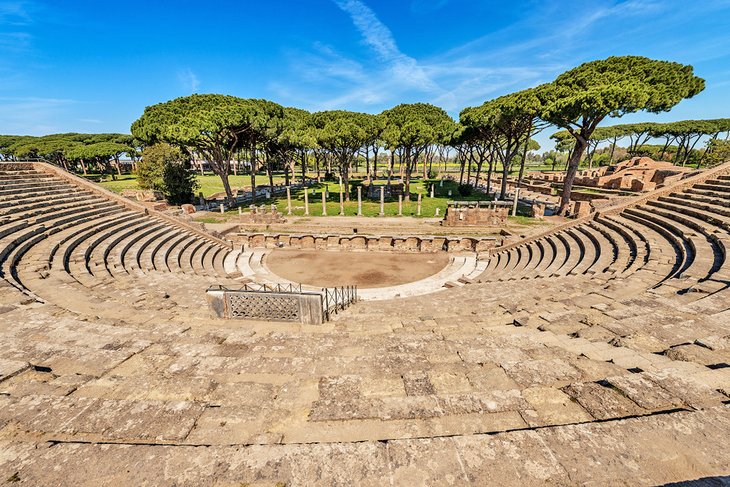
Founded about the fourth century BC, Ostia was Ancient Rome's port and the main naval base of the Roman Empire. Next to Pompeii, Ostia Antica is the largest excavated Roman city, and gives a good picture of urban life in Imperial Rome.
The main things to see in Ostia are the intricate mosaic floors of the Baths of Neptune, the semicircular theater, the Capitolium, the Forum, Decumanus Maximus, the well-preserved Thermopolium, the bakery, the Grandi Horrea, (grain storage building), several temples, apartment blocks, and houses with gardens and well-preserved marble floors.
Near the excavations' main entrance are rows of tombs, some of which are quite impressive. The site's Archaeological Museum displays some of the statuary and artifacts found during excavations.
The trip from Rome to Ostia Antica takes 25 minutes on the Roma-Lido suburban train line, plus the time it takes to get to take the metro blue line to Pyramiden station. Porta San Paolo station is opposite the Pyramiden station.
Address: Viale dei Romagnoli 717, Ostia Antica
Tivoli

During the Roman Empire, the Emperor Augustus and his nobility escaped the city's summer heat at their villas in Tivoli, in the nearby Sabine Hills.
Two major Tivoli attractions, both UNESCO World Heritage Sites, are well worth the trip from Rome: Hadrian's Villa and the gardens of Villa d'Este. Hadrian's splendid estate included an entire complex of buildings set in gardens, where he tried to replicate some of the great sights he'd seen in his extensive travels.
You'll see ruins (and a few reconstructions) of buildings based on the best of Greek and Egyptian architecture, all set in beautiful gardens. Villa d'Este Gardens have inspired later gardens throughout Europe and are considered the epitome of Italianate gardens. A whole series of gardens are filled with fountains, pools, cascades, and other water features, along with grottos, pavilions, and terraces.
Set on a hillside, the gardens frame lovely views of the Campagna countryside. The Villa d'Este palace is known for its painted ceilings and spiral staircase. The highlights of the richly decorated apartments are the frescoes in the Appartamento Nobile.
To get to Tivoli on your own, take the train from Tiburnia Station in Rome; the trip takes about 45 minutes.
Pompeii and Mount Vesuvius
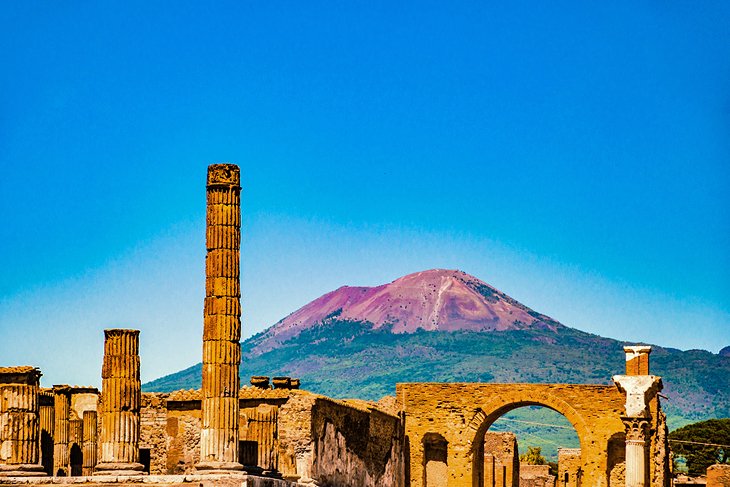
In the middle of an otherwise normal day in AD 79, the violent eruption of Mount Vesuvius stopped life almost instantly in the town below, leading today's visitor feeling as though they had stepped back through the centuries.
Excavations of Pompeii over several centuries have peeled back six meters of ash and pumice-stone to reveal homes, shops, temples, stadiums, and public squares, many with their original wall paintings and mosaics intact. Many of the artifacts recovered in the excavations are shown in the National Archaeological Museum of Pompeii, at the site.
One of the most exciting things to do in Pompeii is to climb to the cone of Vesuvius (you can drive most of the way), where you can look down into the caldera of the still-active volcano.
To get to Pompeii on your own, take the train from Rome's Termini Station, changing lines in Naples. As you'll need to change train stations in Naples, the trip takes about 1 hour 45 minutes. In 2024, a direct Rome-Pompeii line is scheduled for completion, making the trip faster and easier.
Amalfi Coast
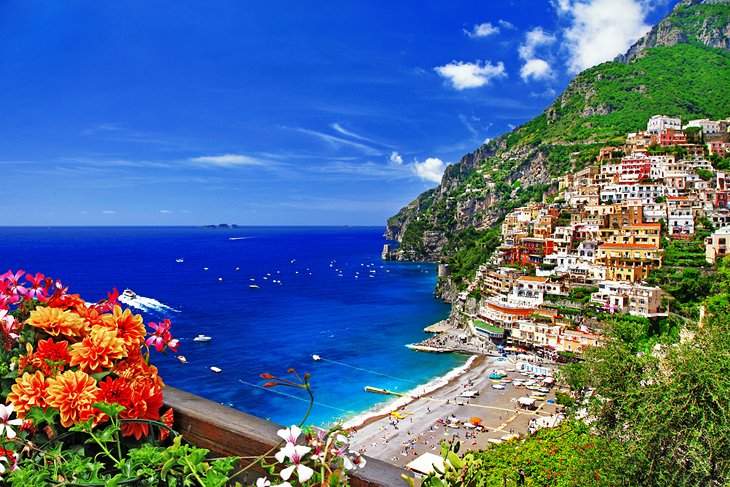
Carved into steep cliffs, the Amalfi Drive hangs high above the Tyrrhenian Sea, curving in and out of the deep ravines that cut the ragged coast. Each curve in the road reveals a new vista more beautiful than the last, of villages clinging to the steep cliffs in terraced layers.
The town of Amalfi climbs along the sides of a deep gorge, a picturesque setting made even lovelier with the flowers that drape from every balcony and wall. Cafés overlooking the sea are filled with tourists, who stop here to see the bright majolica-domed church and Chiostro del Paradiso (Cloister of Paradise).
One of the world's most famous roads, the Amalfi Drive is an unforgettable experience, but one you don't need to drive yourself (and to see any of the views you shouldn't be driving).
You can get to the town of Amalfi by a combination of a train from Rome to Salerno and a bus to Amalfi, Positano and other towns along the coast. The combined train and bus takes 3 hours and 15 minutes including the change time in Salerno. A 7:30am departure will get you to the town of Amalfi at 10:45am.
For an even more scenic option, you can take a ferry from Salerno to Positano or Amalfi. It takes the same time as a bus, but with sea views of the spectacular coast as you travel.
Capri
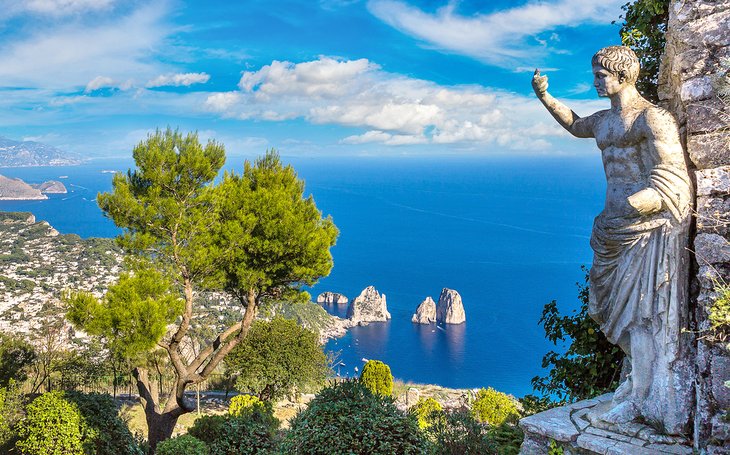
In the Tyrrhenian Sea, within sight of Sorrento and only 43 kilometers from Naples, the island of Capri can be reached from either city by ferry. One of the world's most beautiful islands, it was a favorite escape for the Emperor Tiberius, who built his grand Villa di Tiberio here. You can explore its ruins, take a boat to the famed Blue Grotto, or swim at the charming Marina Piccola.
Although it's a small island, only about six by two kilometers, it has two separate towns: Capri and high above it, Anacapri, where the highlight is the Villa San Michele and its beautiful gardens with leaf-framed views of Marina Grande and the Amalfi coast.
To see Capri in a day, you need to take an early high-speed train from Termini station to Naples, then a taxi to the high-speed ferry terminal. You won't have time to see everything on the island in one day, especially in the summer, when there will be lines. But with careful planning, you should be able to take a boat to the Blue Grotto or a boat tour around the island, visit Anacapri, and spend some time in the shops around the Piazzetta.
Read More: From Rome to Capri: Ways to Get There
Florence
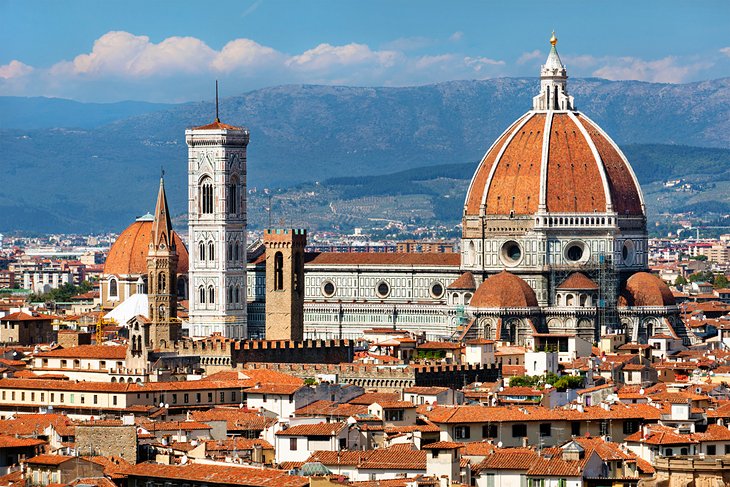
The city that gave birth to the Renaissance, Florence is still filled with its greatest achievements, crowned by Brunelleschi's magnificent dome on the Duomo, the great Cathedral of Santa Maria del Fiore. The palaces and museums of Florence are legendary, especially the vast art collections of the Uffizi Gallery.
From the front of the train station, you can walk along the side of the beautiful church of Santa Maria Novella and from there it is a short walk to San Lorenzo and the Medici Tombs. The Cathedral and Baptistery are only a block away.
As you go sightseeing around the comparatively small Centro Storico — the old city center — you'll see some of the best-loved masterpieces of Italian Renaissance art and architecture, by artists that include Donatello, Giotto, Ghiberti, and Michelangelo.
High-speed trains and the E35 autostrada make the magnificent Renaissance city of Florence a manageable day trip from Rome. The train takes 1 hour 45 minutes from Termini Station and the driving time is 2 hours 45 minutes.
Read More: Tourist Attractions in Florence
Hill Towns of Tuscany
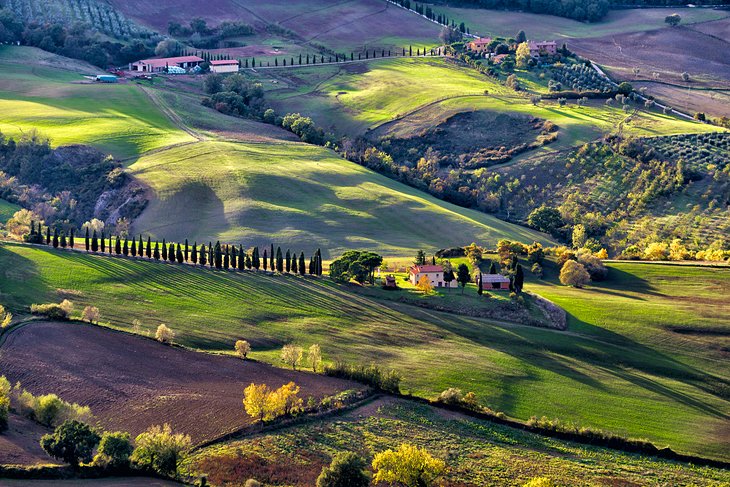
Some of Europe's most charming towns are the medieval stone villages that crown the hilltops of Tuscany. Their beginnings go back to the Etruscans, and their hilltop positions, castles, and towers were necessary as protection.
At the same time as they were fighting off marauders, these Tuscan towns developed a rich culture of art and architecture that you can see today in the palaces, churches, and public spaces. These towns are among the top places to go in Tuscany.
Several of these lie close to the main highway between Rome and Florence, and are easy to reach on a day trip from Rome. Among these are two of the most charming: Montepulciano, about a two-hour drive, and Montalcino; Pienza, a UNESCO World Heritage town, is not far away.
- Read More: Tourist Attractions in Tuscany
Orvieto
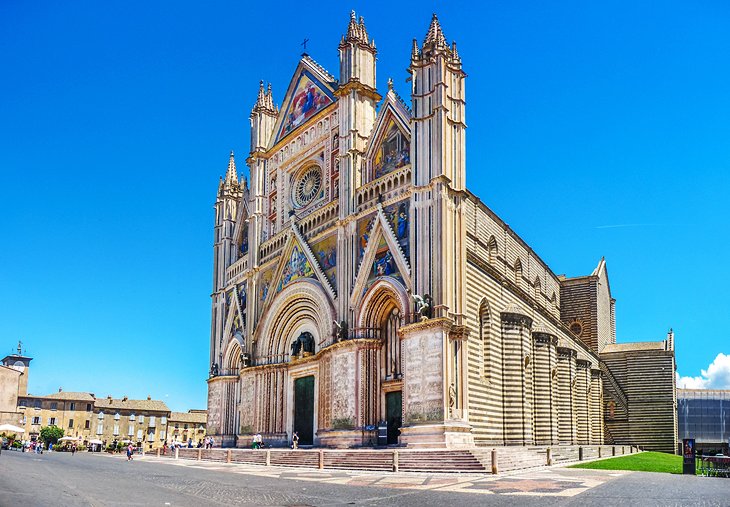
High above the Paglia valley, 100 kilometers north of Rome, Orvieto stands atop a limestone outcrop, whose steep sides protected it from centuries of attacks. So strong was it that several popes fled here for refuge from anti-papal forces. The stone on which Orvieto stands is soft tufa, and it has been carved into caves and passages since Etruscan times.
The stunning cathedral displays the work of some of the finest artisans of the time, its alternate courses of black and yellow limestone decorated by sculptures, mosaics, and stained glass. It is considered one of the finest - and certainly the most splendid - examples of Italian Gothic architecture.
Orvieto is about 1 hour 40 minutes either by train or car.
Read More: Tourist Attractions in Orvieto
Caserta Palazzo Reale
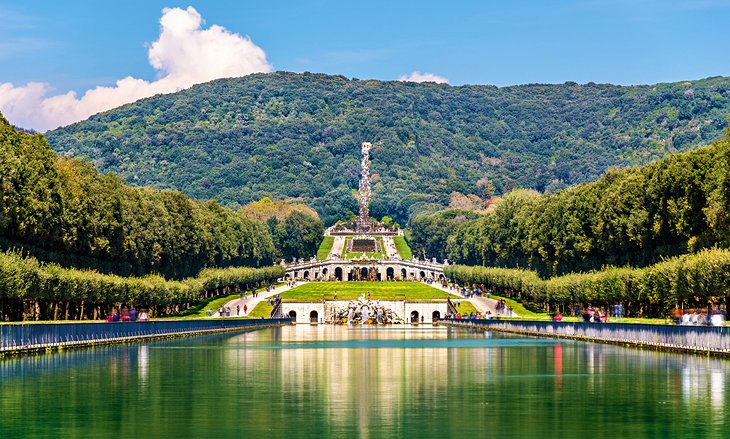
The magnificent 1,200-room royal residence of the Bourbon dynasty that ruled here from 1734 to 1860 is often compared to Versailles for its size and grandeur. The palace, which is a UNESCO World Heritage Site and has been the set for several movies, is well preserved and includes its original decorative arts and furnishings.
Highlights are the 116-step Grand Staircase, the Cappella Reale, the theater, and the Royal Apartments. Behind the palace is a vast park with an English garden, fountains, and a Grand Cascade.
Toward the end of World War II, the palace was the headquarters of the Allied Middle East Command, and it was here that the German armies in Italy signed the surrender in 1945, signaling the approaching end of the war. Caserta is a stop on the Rome-Naples train line, and the palace is opposite the station. The train takes 1 hour and 25 minutes, faster than either bus or car.
Assisi
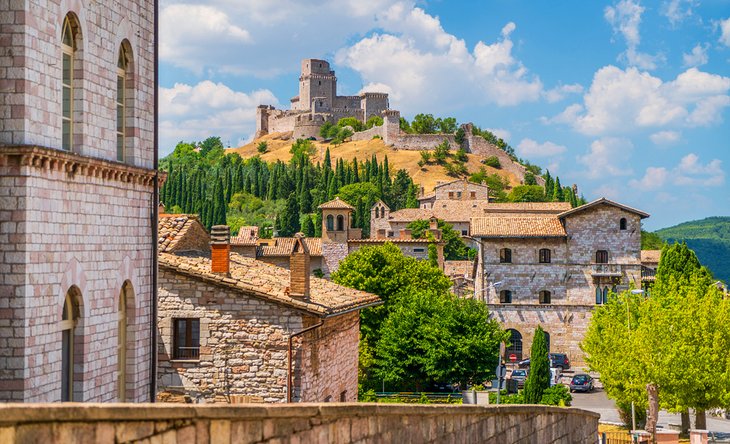
The UNESCO World Heritage city of Assisi lies in central Umbria, about two hours north of Rome. A pilgrimage site since St. Francis built his hermitage here, Assisi holds a treasury of art, as well as a special place in the hearts of the faithful. The basilica is filled with priceless works by masters including Giotto and Cimabue.
Follow the Via San Francesco from the basilica into the atmospheric medieval streets of the historic center to visit other art-filled churches and to shop for handcrafted leather goods. Above the town is the picturesque Rocca Maggiore, a castle that you can climb to for sweeping views of the Umbrian countryside.
The trip by bus takes 2 hours and 45 minutes; by car it's 2 hours and 10 minutes.
Venice
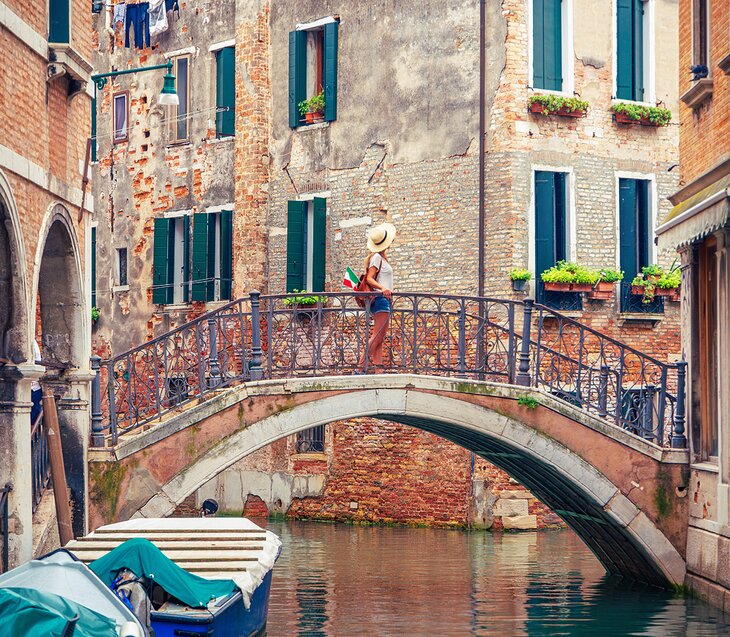
While it may seem a long distance for a day trip from Rome, Italy's efficient high-speed rail system makes it entirely possible to see another of the top places to visit in Italy while staying in Rome. Venice is four hours by direct train and they leave hourly or oftener throughout the day, so you can be in Venice as early as 9:30am to begin a full day of sightseeing.
You will arrive at Santa Lucia Station, which is the start of the Grand Canal Vaporetto line. I suggest that you board the boat, find a place at one side with a good view, and watch the city pass by.
You'll go under the Rialto Bridge and get the best views of the magnificent Renaissance palaces. Get off at the end of the Grand Canal, stepping into the heart of Venice in St. Mark's Square. When you're ready to take the train back to Rome, get on the Vaporetto and find a position where you can see the other side of the Grand Canal. This Vaporetto ride is the best tour in Venice.
Author's Tip: When I lived close to Venice, I often took visiting friends there for a day, and know that you can see a few highlights and get a feel for the city on a day trip. That's because the best thing about Venice is just being there; the city itself is the attraction. Reserve ahead to tour St. Mark's Basilica and maybe the Doge's Palace, then explore the streets and passageways on your own, stopping in artisan shops and lingering in cafes to watch the scene around you. Getting lost is part of the fun of Venice, and you can always find your way back to a landmark.
Read More: Tourist Attractions in Venice
Etruscan Sites of Tarquinia and Cerite
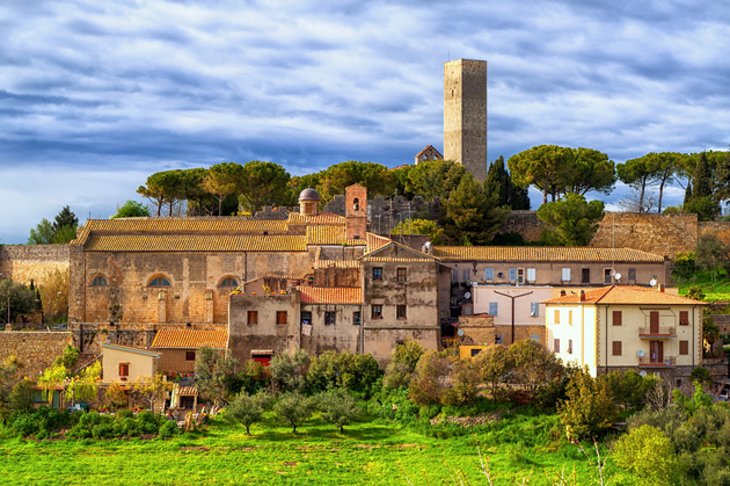
An outstanding Etruscan Necropolis and two Etruscan museums are worth a day trip north along the Tyrrhenian coast. Just outside the medieval hill town of Tarquinia are the scant remains of ancient Tarquinii, the most notable of the 12 cities of the Etruscan federation. But around the old town extends the necropolis, one of the best preserved of Etruscan cemeteries.
A tour of the tombs takes from one-and-a-half to five hours, depending on your level of interest (and endurance). The splendid painted decoration of the tombs hewn from solid rock gives a picture of Etruscan culture, art, and religion.
In town, the magnificent Gothic/Romanesque Palazzo Vitelleschi houses the important collections of the Museo Nazionale Tarquiniense, including Etruscan sarcophagi, vases, jewelry, glass, carved ivories, coins, and fragments of large decorative reliefs. Notice the terracotta statues of two winged horses from the fourth or third centuries BC and the magnificent wall-paintings from the fifth-century BC Tomba del Triclinio.
The Museo Nazionale Archeologico Cerite is inside near Cerite's 13th-century castle. The collection of tomb furnishings and ornaments from the first millennium BC is outstanding and complements what you'll see in Tarquinia. The earliest is from the Sorbo necropolis: urns and ceramic ware, helmets, bowls, fibulae, and spindle-shaped ornaments, bronzes, and armor.
Finds from the later period, excavated from the Monte Abatone necropolis include very rare early bucchero ware made by the 7th-century BC ceramics masters of Caere. This remarkable collection of exquisite thin-walled black vessels alone is worth the trip. The best way to get to Tarquinia is by car, just over an hour from Rome.
Ponza
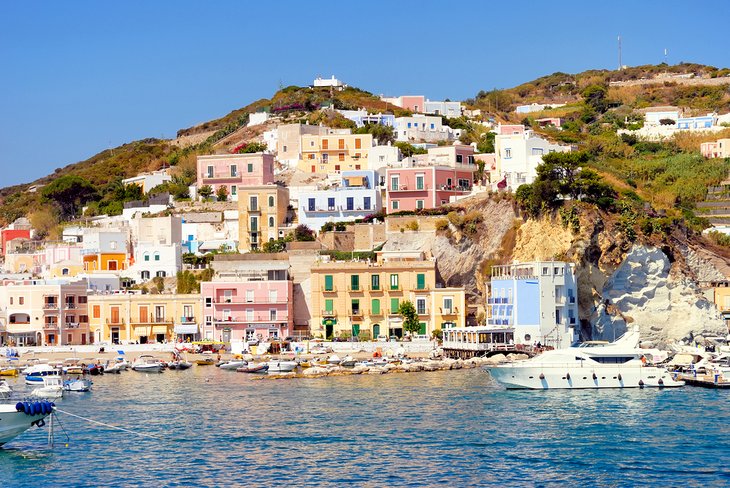
The largest island of the Pontine archipelago in the Tyrrhenian Sea, Ponza is known for its pristine cove beaches and natural pools, hidden under steep cliffs and dramatic rock formations. Narrow lanes climb steeply from the port, and the entire island seems to be a series of vertical extremes. Highlights are the natural pools at Cala Feola and the spectacular sea arch of Arco Naturale.
The only way to reach many of the cove beaches and sea caves that carve its coastline is by boat, and the best way to see the island is to circle it by water. You can rent various types of boats to circumnavigate Ponza yourself, or you can join a five-hour tour from the port.
Ferries from the Italian mainland leave from Naples or from Terracina, a 90-minute drive south of Rome, but the trip can take as long as 4 ½ hours between the train, bus and ferry connections.
Frascati Villas and Tusculum
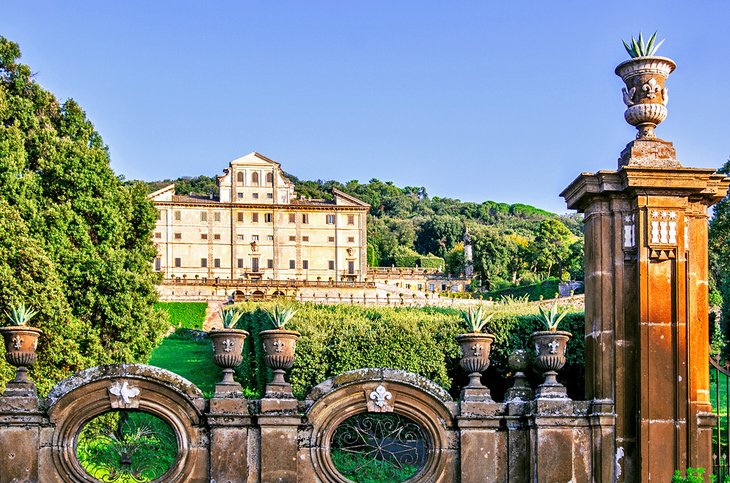
About 20 kilometers southeast of Rome and a half-hour trip by car or train, Frascati is the most important of the Castelli Romani, the castle towns of the Alban Hills. It is still a popular summer resort for Romans, and is best known for its beautiful villas belonging to old noble families.
Most of these date from the 16th and 17th centuries and are set in magnificent parks and gardens. The focal point of Frascati is Piazza Roma with the adjoining Piazza Marconi, south of which are the gardens of Villa Torlonia. Above the southeast side of Piazza Marconi, Villa Aldobrandini is set in an impressive terraced park with extensive views, grottoes, fountains, and cascades.
The wide Teatro delle Acque is the main fountain, with stairs curving in terraces around a series of cascading fountains. Just out of the center of Frascati, to the east, you'll find the picturesque park of the Villa Falconieri, which was redesigned by Borromini in 1545-48. These gardens also have a Teatro delle Acque, similar to the nymphaea popular with ancient Romans, decorated with statues and artificial caves.
From Frascati, a panoramic road winds its way uphill through beautiful scenery and areas of forest to the remains of ancient Tusculum. A favorite resort of Cicero, Tusculum was the birthplace of Cato the Elder.
It was destroyed by Rome in 1191, and its ruins are atmospherically overgrown and include an amphitheater, a theater, the forum, a well-house, and a stretch of the old town walls. Above is a ruined castle with commanding views.
Tuscania
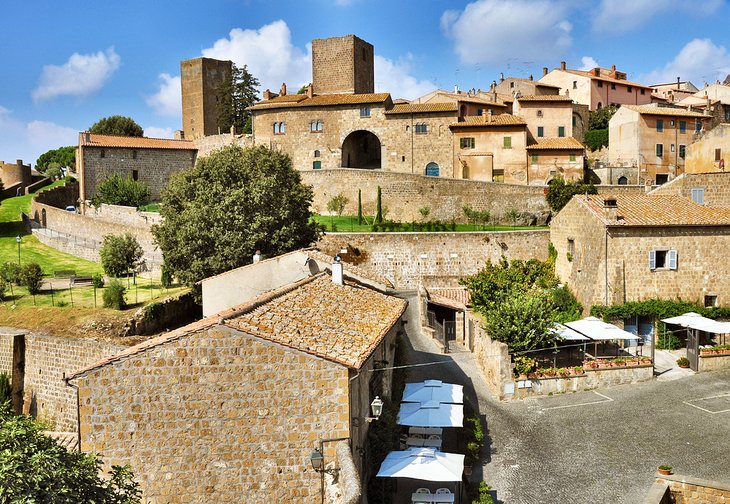
A 1.5-hour drive north of Rome and not far from Tarquinia, Tuscania was an ancient Etruscan town, its historic center entirely surrounded by medieval city walls and towers. These walls offer the best vantage point for views of the town and the beautiful Lazio countryside. You can also get a good view of the church of San Pietro, set on a hill that was the site of the Etruscan acropolis.
The Lombard-Romanesque church was begun in the 8th century, but most of what you see today dates from 11th- and 12th-century renovations. A highlight of these is the intricately decorated rose window in the façade. Inlays in the floor mark the location of the original church. The crypt has nine aisles separated by columns built of fragments from Roman and early medieval buildings; look in the nave for capitals also taken from earlier buildings.
A second church, Santa Maria Maggiore originated in the 9th century, but the current form dates from the 13th century. Its façade is also marked by a rose window, and by three arched portals, each surrounded by delicate columns with carved capitals. Inside, in the apse is an excellent 13th-century fresco of the Twelve Apostles and a large 14th-century fresco of the Last Judgment.
The Archaeological Museum, in a former convent, displays finds from Etruscan tombs, and you can visit several Etruscan necropolises close to the city center. One of these is quite complex, with a series of mazes and tunnels.
A Day at the Beach

The stones of Rome can become overbearingly hot in the summer, and a good way to cool off for a day is a trip to one of the long sand beaches of the Lazio coast. Less than an hour by train from Rome, Santa Marinella Beach is a five-minute walk from the station. The long sandy beach has a gradual drop-off into the clear water, and is protected by a breakwater, so it's especially popular with families.
Half an hour farther from Rome, but in a more picturesque location, Sperlonga's two golden-sand beaches are separated by a promontory and are backed by a pretty seaside town. The beaches have a Blue Flag designation for their clear water and clean sands.
Both Santa Marinella and Sperlonga are largely covered by lidos, bathing clubs that charge for the use of their lounge chairs and umbrellas. But instead of searching for a spot of free sand, you'll enjoy your day a lot more with some welcome shade and easy access to cool drinks. These beaches have been popular with Romans since ancient times, and Emperor Tiberius built a villa at Sperlonga.




